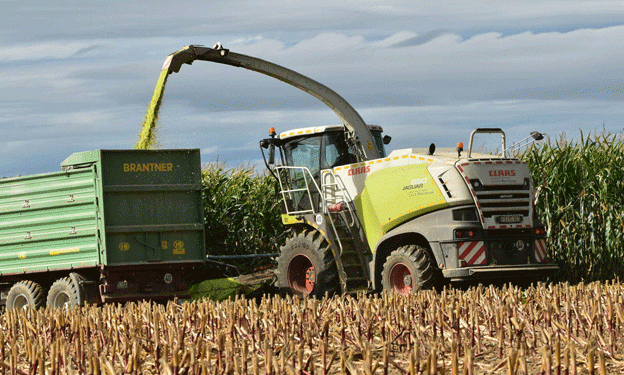In the dynamic world of agriculture, every decision counts, especially when dealing with unpredictable weather conditions. Thomas Andresen, a farmer in Schleswig-Holstein, Germany, grows a mixed crop of corn and beans, a combination praised for its efficiency in crop rotation and feed production. However, this year’s weather patterns have caused disruptions, forcing early harvest decisions and testing the limits of machinery.
The Challenge: Unfavorable Weather
The spring planting season for Andresen’s corn and bean mixture faced an unexpected setback: unseasonably cool temperatures. While the beans thrived, the slow-growing corn lagged behind, creating an imbalance in the mixed crop. Ideally, the mixture would be harvested weeks later when both crops reach maturity. However, the beans grew excessively heavy, toppling the corn and creating additional stress on the field.
According to Germany’s agricultural monitoring reports, early 2024 has seen a 15% decrease in average temperatures during the spring planting season compared to the last decade. These deviations lead to uneven crop growth, reducing the efficiency of mixed farming systems designed to balance resource use and minimize input costs.
Mechanical and Logistical Struggles
Harvesting the uneven crop presented a new set of challenges. The Andresen family’s machinery was pushed to its limits, with their Claas chopper struggling to handle the dense mixture of corn and overgrown beans. The delays caused by equipment failure added pressure, as commercial harvesting companies were already operating at full capacity.
The situation highlights a broader issue facing farmers worldwide: equipment and harvesting methods must adapt to changing climatic conditions. A report by the European Agricultural Machinery Association (CEMA) indicates that nearly 30% of mixed crop harvests in Europe are delayed or disrupted annually due to adverse weather, costing farmers millions.
The Economic and Environmental Impact
Mixed cropping systems like Andresen’s offer numerous benefits, including improved soil health, reduced pest pressures, and increased biomass production. However, when weather throws these systems off balance, the consequences ripple across both the farm’s economy and the environment. Early harvesting not only reduces yield potential but also impacts feed quality, which can have downstream effects on livestock productivity.
Thomas Andresen’s story underscores the vulnerability of agricultural systems to climate variability. To combat these challenges, farmers need access to improved crop varieties, adaptive machinery, and real-time weather forecasting tools. As climate patterns continue to shift, integrating resilient strategies into agricultural practices will be essential for sustaining productivity and minimizing losses.
Error





